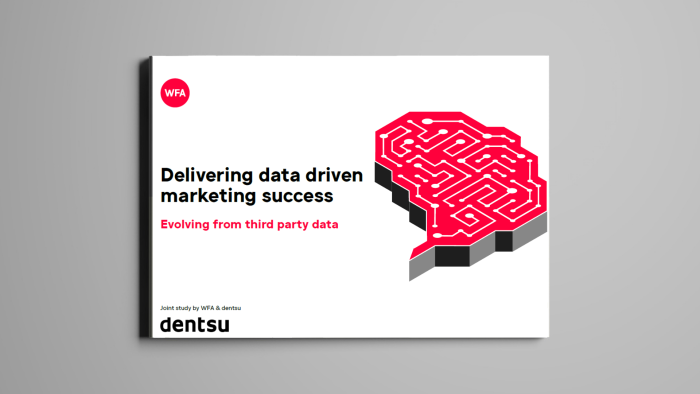Get analysis, insight & opinions from the world's top marketers.
Sign up to our newsletter.
If there’s one key learning from the latest WFA research on data transformation, it’s that too few companies have yet taken the right actions to cope with the loss of cookies. Tom Ashby, Global Lead, Media Services at WFA, explains.

We’ve known that for a long time that the demise of the cookie will transform the data landscape. The process may have been delayed, but this year Google finally started phasing out cookies on Chrome, the world’s most-used browser.
The conventional wisdom is third-party data will decrease in importance, increasing the pressure on first party data. But this is not a straightforward swap. Extracting value from first party data requires different tools and techniques, and perhaps additional budget.
New research carried out by WFA in partnership with dentsu reveals whilst many of the world’s biggest advertisers are on the right path, only 10% have a fully-fledged data strategy. A quarter believe third-party data remains business critical, so are likely to find the phase-out of cookies particularly challenging. 63 organisations responded to the survey, including many of the top 100 advertisers worldwide, collectively accounting for approximately $50bn global spend.
Delivering Data Driven Marketing Success: Evolving from third-party data – draws on survey results from some of the world’s biggest advertisers:
The foundation to success is making a series of active decisions about the data points to collect. The very best data-driven organisations can articulate why they are collecting data, how they will utilise it, who will conduct the analysis, where and for how long it will be stored – all contained in a legislative-compliant framework with senior buy in.
The report identifies the tools and techniques used by companies at early, mid and advanced stages of data-driven marketing.
But simply employing these tools and techniques will not in itself mean an organisation is mature. The key to success is for an organisation’s culture to be set around data-driven marketing, with always-on training and a constant desire to improve the accuracy of ROI calculations.
At the early stage, advertisers are likely to rely heavily on their media agency. The traditional media agency scope of work typically moves from the media agency to shared responsibility, and, in many cases, becoming at least partially in-housed during the transition.
At the mid stage of the process, the use of more complex tools and techniques as well as an improved focus on the value being generated are common. There is also more emphasis on internal training, so the in-house team can do more than simply take ownership of the traditional media agency scope of work.
At the advanced stage, advertisers start to use techniques such as data modelling and dynamic creative optimisation. There is also a greater willingness to outsource some of these workstreams, bringing the best of the outside in.
As advertisers seek to match the 10% of survey respondents who already have a fully-fledged data strategy, they should remember one simple truth, however: in data-driven marketing, as in so many other areas, the right mindset makes everything that much easier.
WFA member? Download the report here.

For more information or questions, please contact Gabrielle Robitaille at G.robitaille@wfanet.org